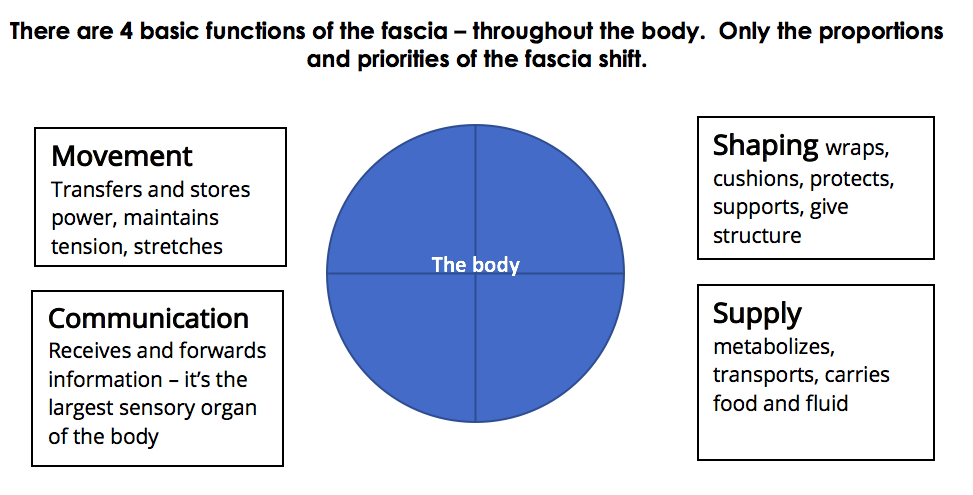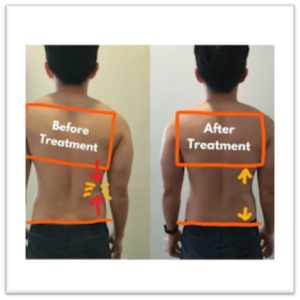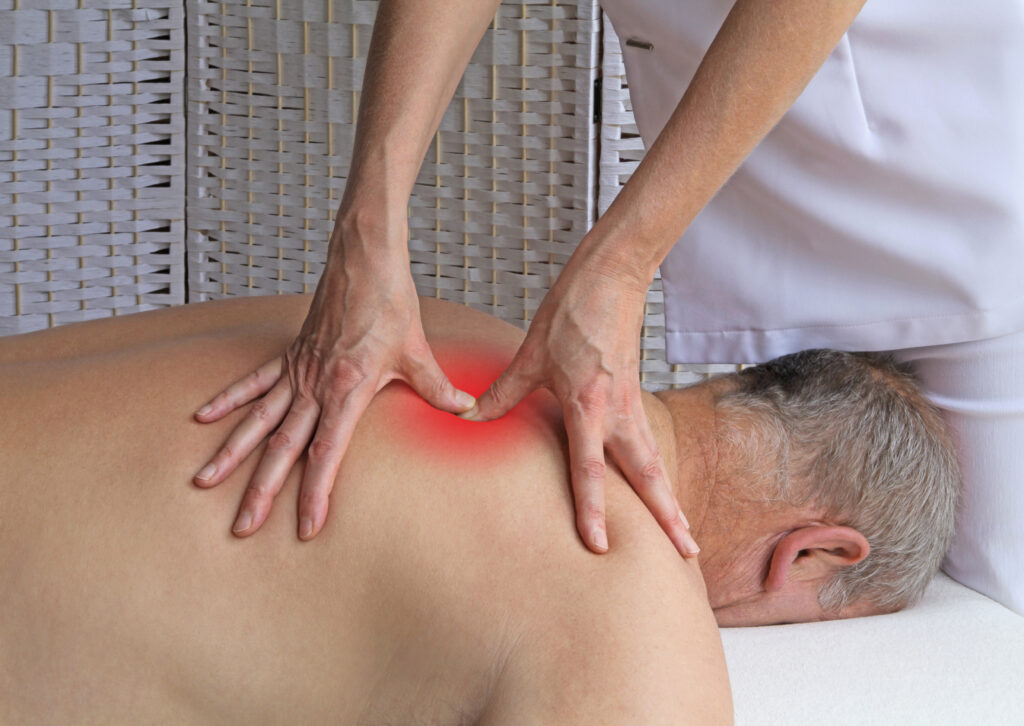 06 Feb 2022
06 Feb 2022
Understanding Myofascial Release therapy
Myofascial release is a type of physical therapy used to treat myofascial pain syndrome.
A basic understanding of the way the body works tells you that it isn’t just the skeletal system of bones, connected to muscles by tendons & ligaments that is at work here.
Something else is holding everything in place within the body: connective tissue called fascia. When you lift the skin of a raw chicken – you’ll come across a transparent, spider webby film. That’s fascia – a continuous casing of connective tissue that surrounds and penetrates everything in the body – veins, arteries, muscles, tendons, ligaments & organs. — it also holds them all in place. Muscles cannot work or keep their shape without fascial envelopes. The features of connective tissue are very important in relation to pain, diseases, and functional limitations.
The term “myo” in “myofascial” is the scientific word for “muscles.” The term “fascia” refers to the connective tissue that surround the muscles. It runs throughout our body and is linked to various organs.
In the past fascia was often overlooked – bodyworkers focused upon using deep pressure to release the ‘knots’ in muscles, without considering that muscles were surrounded by fascia in & that any inflammation, adhesions & difficulty in movement were also affecting the fascia as well. Now medical research is increasingly focused upon the role of fascia in causing aches, pains & restriction of movement within the body.
Correspondingly, a therapy arose to help with it: Myofascial Release
Fascia consists of ground substance, and the proteins collagen, elastin. Each person carries between 18 – 23kg of connective tissue and it stores ¼ of the body’s water, therefore providing the body with food and hydration. The thickness and consistency of fascia depends on its location and the role it plays in the body.
The skeleton is not scaffolding. It cannot stand upright on its own. Almost nowhere in the body do bones directly touch each other – they are flexibly interconnected by connective tissue. The body is therefore, made up of a whole network of different, tensile elements. Myofascial release therapy separates this network into fascial (connective) chains in the body.
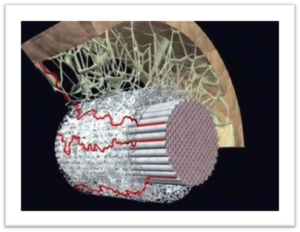
The 4 main chains are the
Superficial back line – runs from the feet to the back, neck head and eyebrows
Superficial front line – runs from the toes to the pelvis, up the belly to the neck and head
2 lateral lines – run along each side of the body – from the outside of the foot, outside of the ankle, weave up the sides of the body to the head
Spiral line – winds around the body and encases the body in a double helix.
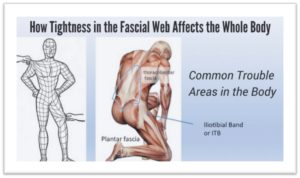
Myofascial pain is a condition that affects the fascia and muscles. It occurs when the soft tissues in the body become painful and inflamed. Myofascial release focuses on reducing pain by easing the tension and tightness in the connective tissue, and in turn -the soft tissue.
For that reason, myofascial release is often used over a broad area of muscle and tissue rather than at a single point.
Fascia research sheds light on chronic pain. There is now concrete evidence that the fascia plays a huge role in the creation of soft tissue pain. As fascia has a rich, sensory nerve supply – injuries to the fascia causes contraction, which in turn causes inflammation in the soft tissue, leading to cramping, compromised gait, structural misalignment and eventually – chronic pain – all most likely away from the source of the pain.
Myofascial Release helps to reduce tension throughout your body by releasing trigger points across a broad section of your muscular system.
An example of Myofascia release
Pain complaint – in the left side neck, jaw clicked and often a ringing in the left ear.
Source of pain was found in the right side of the abdomen.
In my practice – I will
- Listen to your pain complaint, acute and chronic.
- Body read – to look at your posture / gait.
- Find the connection between your point of pain and source of pain
- To ascertain which myofascial chain to use and release
- To reduce pain – with manipulation, exercise, and time.
- I’ll need a minimum of 20 minutes, max of 30 minutes to work on you
- My treatment is not comfortable.
- Reactions to my treatment could include nausea, extreme tiredness, ‘run over by a bus feeling, increase of energy, emotional changes.
- It may take more than three sessions
- You will need to
- Drink more water
- Stretch , move.
- Not rely 100% on A
- NY therapist to fix you – your input is vital, and NO therapy will work without it
Written by Vicky Thompson

